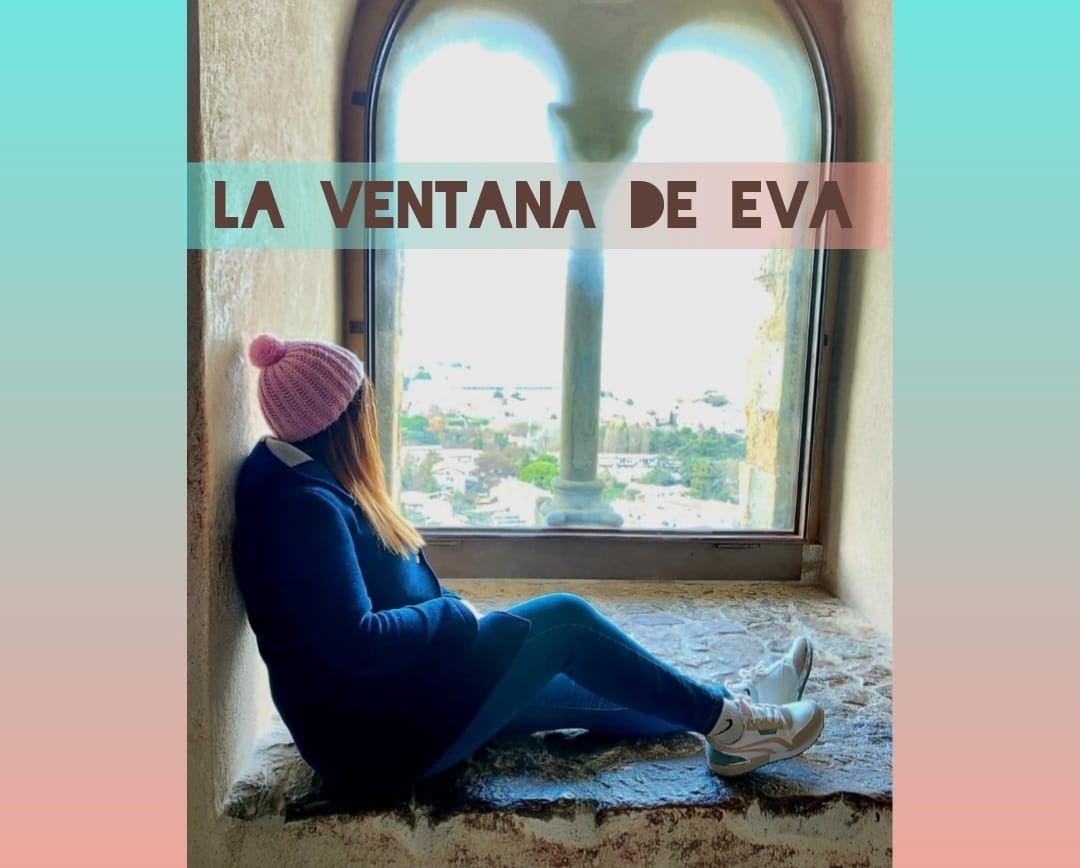FROM THE CARTAGENA ARSENAL, are you coming with me?
They say we are energy. I don’t know very well where they want to go with that expression, but what I do affirm is that there are people who approach you and generate a rejection that you don’t know how to explain and others, who are light, joy and that you walk with them. They guarantee laughter, escape and, above all, learning about everything they give you, because they also live it with enthusiasm. I took that walk surrounded by two extraordinary people, wise, generous and who always, always, make me laugh. One has lived in this special place that we visit today for many years. Almost like her home. She tells things with humor but always from the most absolute knowledge. If the Navy ever thinks we deserve an official chronicler, I wouldn’t doubt it. My friend Diego Quevedo. And then there is Juan Ignacio Chacón, who taught me everything I know about the Peral Submarine and many more things. And together with Diego, they form an extraordinary duo. And since they say that there are no two without three, from time to time I join them and such beautiful stories come out…
There is a three-millennial city with a huge balcony and sea views. A place where the squawks of the seagulls become ambient music for those of us who walk through its port.
There is, in this little piece of the Mediterranean, an immense place painted for many years in my favorite color, yellow. And it has a beautiful entrance door with the four-sphere clock tower, where for many years we have celebrated the pre-grapes, we welcome the coming year with laughter and merriment and we wait with passion for the departure. of San Pedro, every Holy Tuesday.
Walking through that door is a privilege for me, because I know I am going to find incredible stories. So I put a smile on my face, that of excitement, and I begin to listen attentively as Diego tells me when and why this place came to life.
To put ourselves in context, I tell you that the first Bourbon king, Philip V, reigned in 1715. The ships of the navy were dispersed and there was no Arsenal in Spain to group them together, as the English had been doing for many years.
The idea was proposed to the king and it was accepted. He ordered the construction of four arsenals. Could it be true that things in the palace are going slowly? Because Philip V got down to work and… Okay, okay, it took time, but we are talking about the 18th century, everything was slower than now. Well, now that I think about it…, I wouldn’t know what to say. Eva, shut up, you won’t know how to get out.
Well, four Arsenals; Cádiz, ideal for the South Atlantic area, Cartagena, Mediterranean ships, Ferrol, Cantabrian ships and Havana. Yes, Havana, because to refresh your memory, at that time, Cuba was ours.
So my beautiful city of Cartagena was chosen to build an Arsenal.
And so it was that in the Mandarache Sea, an inland lagoon, the terrain began to be studied. A muddy terrain in which defining a perfect rectangle meant digging a lot and achieving stability by piloting some areas with wooden logs, such as where the prison in the city would be built some time later.
Do you know that the Rambla de Benipila led to this enclave? Imagine the work they did to divert its mouth to the Algameca Chica.
The labor for the construction was almost entirely prisoners who came from prisons in Africa. They lived in galleys at night, and due to a serious accident, the king ordered the construction of the prison to ensure their safety.
And I’m going to tell you something. Over time the prisoners improved their conditions, although I already narrated all this in my story about the prison. But I was delighted to find in this endless complex, carved wooden benches and lanterns, which my friend Diego Quevedo tells me were made by prisoners in workshops in order to reduce their punishment. Real works from amazing artists!
But, returning to the Arsenal… In the second half of the 18th century and almost all of the 19th century they only knew how to build wooden ships. The wood treatment process carried out in this place was laborious, laborious. Processes of moistening, shaping, stretching, heating…
Then came the Industrial Revolution and with it steam, electricity and finally steel. We started building steel and non-wind powered ships!
And when something becomes obsolete… A large part of the Arsenal was left unused for almost 20 years. Only rats walked through that place of so much life.
A shipyard was built and our city enjoyed the greatest advances. A shipyard that today is NAVANTIA, an international reference in the construction and repair of ships and so many things.
And I love stories that have happy endings, especially when there are great people who manage to fit the pieces of the puzzle together and welcome new discoveries and opportunities.
How this happened. In 1915 the Submarine Weapon was created!
Many of you will have heard that Cartagena has recently begun to be called THE CITY OF SUBMARINES.
Well, at that time, people began to talk about Cartagena having some docks that could be converted into docking places for submarines. And if you notice if one day you have the opportunity to visit this place, above the building it says the initials E.S.
And Diego tells me that there are those who believe it is for the Submarine School, but no, it was called the Submarine Station. someone said, If where the trains stop is called a train station, where the submarines stop will be called a submarine station.
And yes, this whole story is incredible, but you know me. I begin with that dance from one side to the other to observe and ask and above all to search through all the anecdotes that leave me with happiness through the roof. And a place like this has to have them and many of them.
So from something that I imagine is a bridge in Venice and I go into romantic mode with a photo of the three of us included, I start making eyes and getting Diego to share many things with me.
Let’s see, Eva the curious, Diego says. Do you know what the name of this dock where we are now? D. Juan de Borbón Dock. D. Juan de Borbón liked to come to Cartagena and his yacht docked here. The Giralda yacht. When he dies, his son, the current king emeritus, D. Juan Carlos I, gives it to the Navy. Today the Giralda is a training ship for the Marine Guards.
Yes, Diego, I tell him. These are the things I like. What are those ships?
I can’t help it. But if that weren’t the case, I wouldn’t know now that those ships were minehunters. And that a naval mine many years ago was a contact mine. If you brushed against her…boommmm. Then they invented magnetic mines and in the end they returned to wood again to build these ships.
Diego, but if those minesweepers aren’t made of wood, I try to correct him.
They are fiberglass! The idea of wood was not good, they did not have stability and too many trees had to be cut down for their construction. And we built these here, in Cartagena, although the patent is English. Always ahead, these English!
They call them tupperware navy, because they were born on the same dates as kitchen tupperware, ha, ha. Well, you do learn from minesweepers, yes.
Look, Juan Ignacio, two submarines that look like they’re in your pocket. Seal submarine and shark submarine. I love them!
Do you know that they were used to promote Spanish industry, and that their engines are Pegasus and their batteries Tudor? Diego clarifies to me.
And it turns out that these submarines were built in Germany in the Second World War, and when the war ended some engineers were welcomed in Cartagena and we have these cute submarines to the delight of my eyes, in a place where our submarine once also rested peacefully. Pear tree.
And I have walked quietly, I have seen shrapnel cannons used to moor boats, replacing buoys and saving money so as not to have to make foundries for it. I have learned that depending on the wind each day, the flag changes. Bigger wind smaller flag. But always, whenever an important authority comes, the flag is the largest size.
I have delighted in a monument made by my friend Fernando Sáenz from Elorrieta in memory of the submariners who died in the act of service. How much I will like this sculptor!
And we have even entered the chapel and I have observed the Virgen del Pilar, patron saint of the Submarine Weapon.
And when he thought he couldn’t impress me anymore, I have been next to the two original sculptural pieces of the monument to the Heroes of Cavite. They were cement! It’s impressive, really. She had no idea about this. They were sculpted in 1923 and in 1985 they were removed due to deterioration and acts of vandalism.
PHOTOGRAPHS GIVEN BY DIEGO QUEVEDO
For the people of Cartagena, little to clarify. For my reading friends from other parts of the geography, they are the sculptures of the monument in the Plaza de los Héroes de Cavite next to the port, in tribute to the fallen and survivors of the Cuban and Philippine wars, inaugurated by the kings of Spain Alfonso XIII and Victoria Eugenia in 1923. And the originals rest today in the Military Arsenal and I have enjoyed that surprise that I was unaware of.
They used the molds to make them out of bronze and in 1998, coinciding with the centenary of the Cuban war, Don Juan Carlos and Doña Sofía reopened the monument.
This curiosity amazes me! Totally unknown to me.
For more than a decade the obelisk was left without the sculptures in our Plaza de los Heroes de Cavite and I was not able to realize it!
I have no excuse, it caught me between approximately 13 and 22 years old. It would be at that time in my life, when I walked without looking.
That’s why today I’m happy, I try not to miss any details and be able to share them with all of you.
I have spread myself, I know, there is so much to tell, each place hides so many stories…
Do you know that the clock…? No, I’m not going to tell it. I have a special surprise, for any given Sunday when you wake up and open Eva’s Window when you hear the nine chimes in the morning, from the Arsenal clock.
Happy Sunday, from the city of submarines.
EVA GARCÍA AGUILERA.
2024-02-11 08:00:28
#CARTAGENA #ARSENAL #coming


